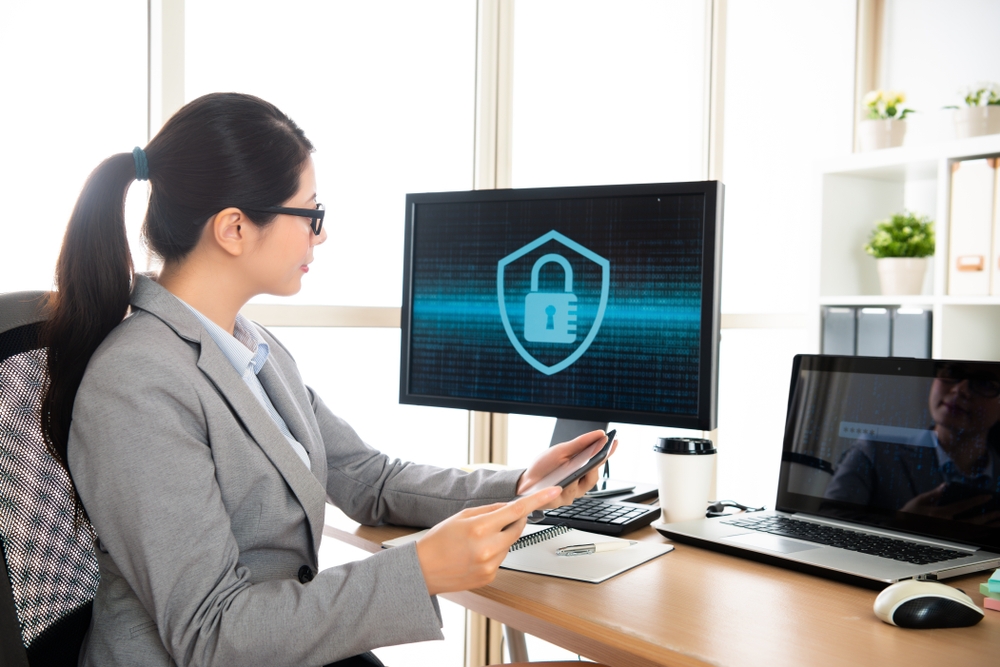
3 Eco-Friendly Keys to Keeping Your Digital Life Secure
Cybercrime continues to rise in 2019. With the number of internet users rising from 3.8 billion in 2017 to an estimated 6 billion by 2022, representing three-quarters of the world’s projected 8 billion population, cybercriminals see growing potential profits in targeting digital consumers and businesses. Healthcare data is a favored target for attack, with ransomware attacks on healthcare organizations expected to quadruple by 2020. Total damages from cybercrime are expected to hit $6 trillion annually by 2021, representing the greatest wealth transfer in history.
To protect yourself against this growing threat, it’s essential to take preventive measures to protect your digital data from cyberthieves. Here are three keys to keeping your digital data secure, and how to do it in an ecofriendly way.
Use Sound Cybersecurity Practices
Protecting your digital data starts with following sound cybersecurity practices. Poor password practices can leave your devices dangerously exposed. You can protect your mobile devices by locking them with a PIN or password, while passwords for email, apps, and websites can be protected by using long character strings (preferably 20 or more characters) with a mix of uppercase and lowercase, numbers, and symbols. You can further protect data on your devices by activating encryption and turning on remote data wipe capability. Keeping your data backed up through automatic cloud services or external drives will protect you from losing your data to ransomware attacks.
Software also needs to be secured. Turning on automatic software and antivirus updates on your devices, using web browsers with frequent updates such as Chrome, and keeping browser plug-ins updated will help prevent security holes. Using Click-to-Play or No Script add-ons will avoid automatic downloads of plug-in content such as Flash and Java that can contain malware.
Being careful what you click on is also critical. Staying on guard against suspicious emails and website links will reduce malware risks. Using a firewall and a secure internet connection such as a VPN instead of a public Wi-Fi hotspot will lower your risk of being hacked as well.
Monitor Your Accounts
Despite your best efforts, your data may still be compromised, perhaps through a breach on a provider’s end. This makes it critical to monitor your accounts for suspicious activity. The best way to monitor your accounts is to subscribe to an identity theft protection service that can automatically track activity on your bank or credit card accounts and alert you to suspicious behavior. Some identity protection services will even offer you reimbursement up to $1 million if your funds are stolen.
If you do suspect your identity has been stolen, you should immediately contact the provider of your affected account, such as your credit card company or bank, as well as the police. If you’re not sure your identity has been stolen, you can contact one of the three major credit reporting agencies (Equifax, Experian, TransUnion) to put a credit fraud alert on your credit report, which will require financial providers to verify your identity before opening new accounts in your name; the agency you alert will notify the other two. If you’re sure your identity has been stolen, you can put a credit freeze on your account, which will block credit unions from releasing your report to new creditors, preventing accounts from being opened in your name. You can lift the freeze temporarily if you need to open an account in your own name. Additionally, it’s a good idea to monitor your own credit report for suspicious activity. You can request a free copy of your credit report once a year from AnnualCreditReport.com.
Secure Your Physical Paperwork
The internet isn’t the only way thieves can get to your digital data. Another vulnerability is physical paperwork containing your account information. Sensitive documents such as Social Security cards and birth certificates are best kept in a secure location such as a safe or lockbox, while paperwork such as bills with account numbers on them should be shredded periodically.
Your mail can also be a target for identity thieves. The U.S. Postal Inspection service advises handing your mail directly to your postal carrier or putting it in an indoor slot at your post office rather than placing it in a mailbox. The Postal Inspector also recommends scheduling prompt pickups of your mail rather than leaving your mail unattended for long periods. If you’re going to be traveling, have your mail held until you get back. You can reduce your risk of mail theft by going with paperless bills when possible, protecting the environment as well as your identity.
Cyberthieves are on the prowl looking for victims, but you can protect yourself by taking preventive measures. Following sound cybersecurity practices, monitoring your accounts for suspicious activity, and safeguarding your sensitive documents and mail will help reduce your odds of having your identity stolen.






